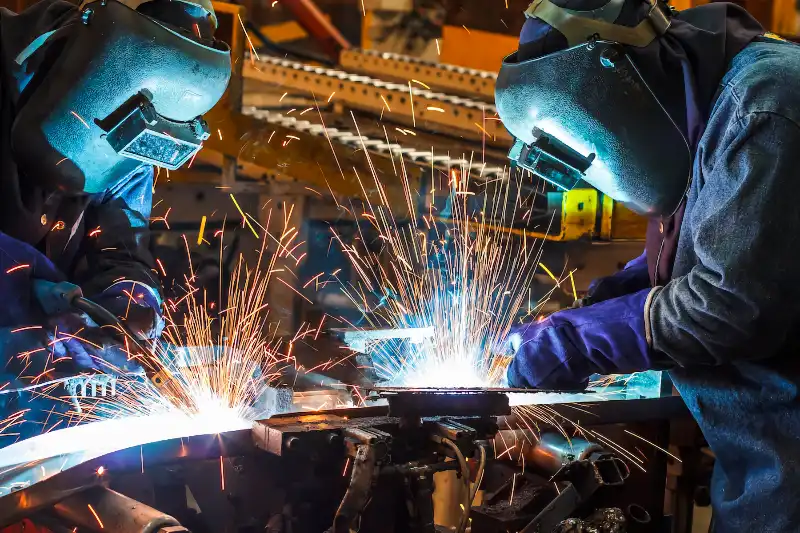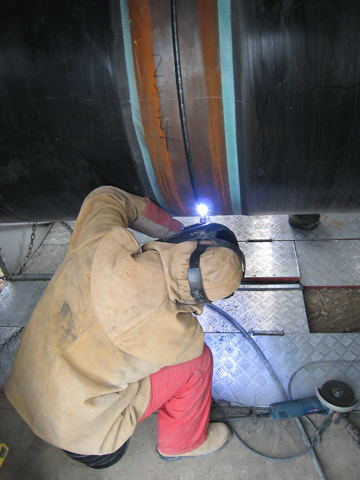Belgrade Fabrication’s go-to strategies for dealing with incomplete fusion
Typical Welding Repair Work Issues and How to Address Them Efficiently
Welding repair work often come across a variety of problems that can endanger the stability of the last item. Usual troubles consist of insufficient penetration, porosity, and imbalance, to name a few. Each flaw presents special challenges that need certain methods for resolution. Comprehending these concerns is necessary for welders aiming to enhance their abilities and results. This conversation will certainly check out these typical welding fixing concerns and reliable approaches to address them.
Insufficient Infiltration
Insufficient penetration occurs when the weld steel fails to completely fuse with the base product, leading to weak joints and prospective structural failures. This issue typically stems from insufficient heat input, incorrect electrode angle, or improper welding rate. Welders may come across insufficient infiltration as a result of a mistake of the needed specifications for a certain product thickness or type. In addition, contamination on the base material's surface area can hinder reliable bonding, exacerbating the problem. To attend to insufficient infiltration, welders must ensure ideal setups on their equipment and preserve a clean work surface. Regular evaluation of welds is advised to determine any type of shortages early, permitting for timely improvements and the prevention of endangered structural stability in bonded settings up.
Porosity
Porosity is a common problem in bonded joints that shows up as tiny gas bubbles caught within the weld metal. This issue can compromise the integrity of the weld, leading to reduced stamina and prospective failure under stress. Belgrade Welding. Porosity usually emerges from contamination, dampness, or inappropriate welding strategies, which allow gases to leave into the liquified weld swimming pool. To address porosity, welders must assure correct surface preparation, maintain a clean workplace, and use appropriate welding specifications. Furthermore, choosing the ideal filler product and shielding gas can mitigate gas entrapment. Routine evaluation and testing of welds can aid determine porosity early, guaranteeing timely corrective activities are taken, thereby preserving the top quality and integrity of the welded structure
Imbalance
Misalignment in welding can develop from different variables, consisting of incorrect arrangement and thermal expansion. Comprehending the origin creates is crucial for efficient resolution. A number of improvement techniques are offered to realign elements and assure structural integrity.
Reasons for Imbalance
Welding misalignment typically stems from a range of underlying problems that can endanger structural honesty. One main reason is improper fit-up of parts prior to welding, which can lead to spaces and irregular surfaces. Variants in thermal growth during the welding process can also result in distortion, particularly if the products being joined have various coefficients of expansion. Furthermore, inadequate fixturing and securing may fall short to hold elements firmly in position, causing movement during welding. Badly maintained devices, consisting of welding devices and tools, might present variances in the weld grain, more adding to imbalance. Operator mistake, stemming from insufficient training or experience, can likewise play a substantial duty in producing misaligned welds.

Correction Techniques Offered
Addressing imbalance efficiently requires a combination of restorative strategies customized to the specific issues at hand. One typical method is making use of fixtures or jigs to hold components in the proper setting during welding, guaranteeing regular alignment. In addition, pre-heating the materials can help minimize distortion and boost fit-up. For considerable imbalance, mechanical adjustment strategies, such as making use of hydraulic jacks or clamps, can be utilized to correct the setting prior to welding. Post-weld heat therapy might also be necessary to soothe stress and anxieties triggered by misalignment. Careful inspection and adjustment throughout the arrangement phase can prevent misalignment concerns from coming to be substantial issues, advertising a smoother welding process and boosting overall structural honesty.
Distortion
Distortion is a common challenge in welding that can develop from various variables, including irregular heating & cooling. Recognizing the sources of distortion is vital for carrying out efficient avoidance methods. Addressing this issue not just boosts structural integrity but likewise improves the general top quality of the weld.
Reasons for Distortion
When subjected to the extreme warmth of welding, products commonly undergo modifications that can cause distortion. This phenomenon largely arises from thermal development and contraction during the welding procedure. As the weld area warms up, the material expands; upon air conditioning, it gets, which can create interior stresses. On top of that, unequal heating across a work surface can intensify these stresses, leading to bending or flexing. The kind of product additionally plays a considerable role; metals with varying thermal conductivity and coefficients of growth might react in a different way, causing unpredictable distortions. Additionally, bad joint layout and poor fixturing can contribute to misalignment throughout welding, increasing the probability of distortion. Comprehending these causes is important for effective welding repair service and avoidance methods.
Prevention Techniques
Effective avoidance techniques for distortion throughout welding concentrate on controlling warm input and making certain correct joint style. Maintaining a regular warm input aids to lessen thermal growth and contraction, which can lead to distortion. Making use of techniques such as preheating the work surface can likewise reduce the temperature gradient, advertising uniform heating. Additionally, selecting proper joint layouts, such as T-joints or lap joints, can improve security and minimize stress and anxiety focus. Implementing correct fixturing to safeguard the workpieces in position further help in maintaining placement during the welding process. Finally, staggered welding sequences can disperse heat extra equally, stopping localized distortion. By using these methods, welders can substantially decrease the chance of distortion and improve the overall top quality of their welds.
Splitting
Cracking is a typical problem come across in welding repair services, like this usually arising from numerous factors such as improper air conditioning rates, material choice, or insufficient joint preparation. The event of cracks can considerably jeopardize the honesty of the weld, bring about prospective failures throughout procedure. To address this issue, welders have to initially analyze the source, making certain that products are suitable and suitably selected for the certain application. Additionally, managing the air conditioning price throughout the welding process is crucial; rapid cooling can induce stress and anxiety and bring about fracturing. Proper joint style and prep work likewise add to reducing the threat. Applying these methods can boost weld quality and sturdiness, inevitably decreasing the likelihood of fracturing in finished weldments.

Insufficient Combination
A significant problem in welding repair work is insufficient combination, which occurs when the weld steel does not effectively bond with the base product or previous weld passes - Welding. This flaw can cause weak points in the joint, potentially jeopardizing the stability of the welded structure. Elements contributing to insufficient blend consist of inadequate warmth input, incorrect welding method, and contamination of the surfaces being signed up with. To address this issue properly, welders ought to guarantee appropriate pre-weld cleaning and surface area preparation, in addition to change their welding specifications to accomplish adequate infiltration and fusion. Regular evaluation throughout the welding procedure can likewise assist recognize insufficient combination early, permitting for prompt restorative measures to improve the general top quality of the weld
Overheating
While welding fixings can improve structural honesty, overheating offers a considerable obstacle that can result in material destruction. Extreme warmth during welding can modify the mechanical residential properties of metals, resulting in minimized toughness, boosted brittleness, and bending. This phenomenon is especially important in high-stress applications where structural dependability is paramount. Recognizing getting too hot can entail visual evaluations for staining or distortion, as stick welder for sale well as checking temperature level during the welding procedure. To minimize the threats related to getting too hot, welders ought to utilize suitable strategies, such as regulating heat input, adjusting traveling speed, and making use of suitable filler materials. Additionally, applying pre- and post-weld heat treatments can help bring back product buildings and boost the total quality of the repair service, making sure long-lasting performance and safety and click over here security.
Often Asked Inquiries
What Are the Typical Indications of a Welding Flaw?

Just How Can I Evaluate My Welds for High quality?
To examine welds for top quality, one can make use of aesthetic examinations, ultrasonic testing, and radiographic approaches. Each method ensures structural honesty, recognizes problems, and validates adherence to defined standards, inevitably improving the reliability of the welded joints.
What Security Precautions Should I Take While Welding?
When welding, one should focus on safety and security by wearing suitable personal safety devices, making certain appropriate air flow, securing flammable materials away, preserving a clean office, and being conscious of environments to avoid injuries and accidents.
Can I Repair a Weld Without Redoing the Entire Joint?
Repairing a weld without remodeling the whole joint is feasible, depending upon the damage (Montana Mobile Welding and Repair). Strategies such as grinding, adding filler product, or utilizing a welding process can effectively attend to details flaws while protecting the bordering structure
What Tools Are Crucial for Effective Welding Repairs?
Vital tools for effective welding fixings consist of a welding machine, cord brush, grinder, safety gear, clamps, and filler products. Each device plays a vital function in guaranteeing quality and safety during the repair procedure. Porosity usually develops from contamination, moisture, or inappropriate welding strategies, which permit gases to leave into the molten weld swimming pool. Poorly maintained devices, including welding devices and devices, might introduce disparities in the weld bead, more adding to imbalance. When subjected to the extreme warm of welding, products typically undertake changes that can lead to distortion. Breaking is a typical problem experienced in welding repairs, typically resulting from various aspects such as incorrect cooling rates, material choice, or insufficient joint preparation. A considerable problem in welding repair services is insufficient blend, which takes place when the weld metal does not sufficiently bond with the base material or previous weld passes.